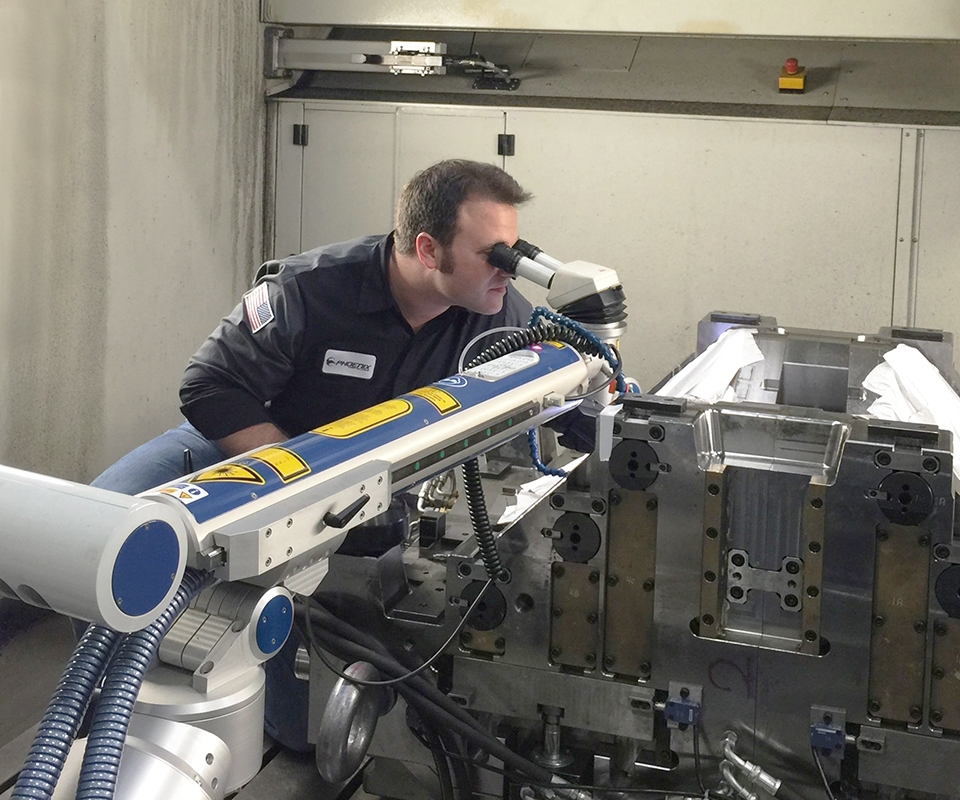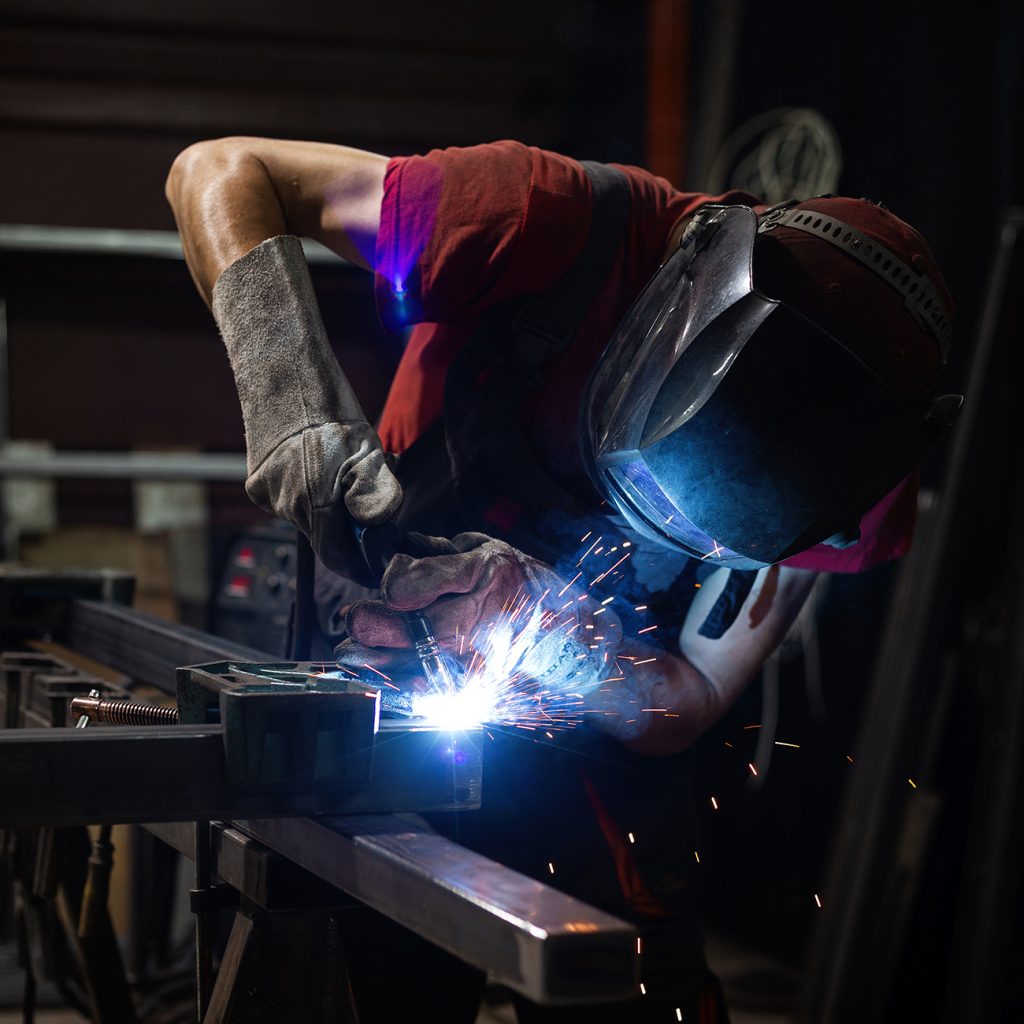Usual Welding Fixing Issues and Exactly How to Address Them Properly
Welding repair work often come across a variety of concerns that can jeopardize the integrity of the end product. Typical issues consist of poor infiltration, porosity, and imbalance, amongst others. Each flaw presents one-of-a-kind difficulties that call for particular techniques for resolution. Recognizing these concerns is important for welders aiming to enhance their skills and results. This conversation will certainly discover these common welding repair service issues and efficient methods to resolve them.
Insufficient Penetration
Inadequate penetration takes place when the weld metal fails to fully fuse with the base product, leading to weak joints and prospective structural failings. This problem commonly originates from insufficient warm input, wrong electrode angle, or inappropriate welding speed. Welders may encounter poor penetration as a result of a miscalculation of the needed parameters for a details product density or kind. Additionally, contamination on the base product's surface area can impede effective bonding, worsening the problem. To deal with insufficient infiltration, welders must guarantee ideal settings on their tools and keep a tidy job surface. Normal examination of welds is recommended to recognize any shortages early, enabling prompt adjustments and the avoidance of endangered structural stability in bonded settings up.
Porosity
Porosity is an usual flaw in bonded joints that materializes as small gas bubbles caught within the weld metal. This problem can jeopardize the honesty of the weld, causing minimized strength and possible failure under stress. Belgrade Welding. Porosity generally arises from contamination, moisture, or incorrect welding techniques, which enable gases to run away right into the liquified weld pool. To attend to porosity, welders must guarantee proper surface preparation, maintain a clean working setting, and use suitable welding parameters. Furthermore, choosing the ideal filler product and securing gas can alleviate gas entrapment. Normal inspection and screening of welds can help determine porosity early, guaranteeing prompt restorative actions are taken, therefore preserving the top quality and reliability of the welded structure
Misalignment
Misalignment in welding can emerge from numerous factors, including improper setup and thermal expansion. Understanding the origin is essential for effective resolution. A number of improvement methods are readily available to straighten elements and ensure architectural stability.
Root causes of Imbalance
Welding misalignment often originates from a range of underlying problems that can compromise architectural honesty. One key cause is inappropriate fit-up of elements prior to welding, which can bring about voids and uneven surface areas. Variations in thermal growth during the welding procedure can also cause distortion, specifically if the materials being signed up with have various coefficients of growth. Additionally, poor fixturing and clamping may stop working to hold components firmly in area, leading to motion throughout welding. Poorly conserved equipment, including welding machines and devices, might introduce incongruities in the weld bead, additional adding to misalignment. Lastly, operator mistake, originating from not enough training or experience, can additionally play a considerable duty in creating misaligned welds.
Adjustment Techniques Available
Dealing with imbalance properly requires a mix of restorative methods tailored to the details concerns at hand. One typical approach is the use of components or jigs to hold elements in the correct setting during welding, making certain consistent positioning. Additionally, pre-heating the products can assist lower distortion and boost fit-up. For significant imbalance, mechanical adjustment strategies, such as utilizing hydraulic jacks or clamps, can be utilized to correct the placement prior to welding. Post-weld warm treatment might also be essential to ease anxieties brought on by misalignment. Lastly, mindful examination and modification during the arrangement phase can prevent misalignment issues from becoming considerable problems, promoting a smoother welding process and boosting overall structural stability.
Distortion
Distortion is a typical difficulty in welding that can develop from numerous variables, consisting of uneven cooling and heating. Recognizing the sources of distortion is vital for applying effective prevention techniques. Addressing this concern not only boosts architectural integrity however additionally boosts the total top quality of the weld.
Causes of Distortion
When subjected to the extreme heat of welding, materials commonly undergo changes that can result in distortion. This phenomenon mostly develops from thermal expansion and tightening throughout the welding procedure. As the weld location heats up, the material expands; upon air conditioning, it contracts, which can create interior stresses. Additionally, irregular heating throughout a work surface can worsen these stresses, resulting in bending or bending. The kind of material also plays a substantial role; steels with differing thermal conductivity and coefficients of expansion might respond in a different way, bring about unforeseeable distortions. Poor joint style and poor fixturing can contribute to misalignment during welding, increasing the probability of distortion. Understanding these reasons is necessary for reliable welding repair work and prevention strategies.
Prevention Techniques
Reliable prevention methods for distortion during welding concentrate on managing heat input and guaranteeing proper joint design. Keeping a regular heat input aids to reduce thermal expansion and contraction, which can result in distortion. Making use of methods such as preheating the work surface can likewise lower the temperature gradient, promoting consistent heating. Additionally, choosing suitable joint designs, such as T-joints or lap joints, can improve stability and lower stress concentrations. Executing proper fixturing to protect the workpieces in position better aids in maintaining positioning throughout the welding procedure. Finally, staggered welding series can distribute warm extra uniformly, protecting against localized distortion. By using these techniques, welders can greatly reduce the chance of distortion and enhance the overall quality of their welds.
Fracturing
Splitting is an usual problem come across in welding repair services, typically arising from various variables such as incorrect cooling rates, product selection, tungsten electrode or insufficient joint preparation. The occurrence of cracks can significantly jeopardize the stability of the weld, causing prospective failures throughout procedure. To resolve this concern, welders should initially examine the origin, guaranteeing that materials work and appropriately picked for the details application. Additionally, regulating the cooling rate throughout the welding process is crucial; fast air conditioning can cause tension and bring about fracturing. Correct joint design and preparation additionally add to reducing the threat. Executing these approaches can boost weld quality and durability, ultimately reducing the possibility of fracturing in completed weldments.

Incomplete Blend
A significant concern in welding fixings is insufficient blend, which takes place when the weld metal does not sufficiently bond with the base material or previous weld passes - Belgrade Fabrication. This issue can bring about weak points in the joint, potentially compromising the stability of the welded framework. Factors adding to incomplete blend include inadequate warm input, inappropriate welding method, and contamination of the surfaces being signed up with. To address this problem successfully, welders should assure correct pre-weld cleaning and surface prep work, as well as change their welding criteria to accomplish appropriate penetration and combination. Regular assessment during the welding procedure can additionally help recognize incomplete fusion early, enabling for prompt corrective measures to improve the total top quality of the weld
Overheating
While welding repair work can boost structural integrity, overheating provides a significant challenge that can cause material deterioration. Excessive warmth during welding can alter the mechanical homes of metals, leading to reduced stamina, enhanced brittleness, and warping. This sensation is particularly important in high-stress applications where architectural dependability is vital. Determining overheating can include visual assessments for discoloration or distortion, in addition to monitoring temperature throughout the welding process. To reduce the dangers connected with overheating, welders need to use proper strategies, such as managing warm input, adjusting travel rate, and using ideal filler materials. Furthermore, executing pre- and post-weld heat therapies content can help recover material properties and enhance the general top quality of the repair, making sure long-lasting performance and safety and security.
Regularly Asked Concerns
What Are the Common Indicators of a Welding Defect?

How Can I Examine My Welds for Quality?
To check welds for high quality, one can utilize aesthetic evaluations, ultrasonic screening, and radiographic techniques. Each method guarantees architectural stability, determines you can try these out defects, and verifies adherence to specified criteria, inevitably improving the reliability of the bonded joints.
What Security Safety Measures Should I Take While Welding?
When welding, one must prioritize security by putting on proper personal safety equipment, making sure correct air flow, protecting combustible materials away, preserving a clean work area, and understanding environments to stop crashes and injuries.
Can I Fix a Weld Without Redesigning the Entire Joint?
Repairing a weld without redoing the entire joint is possible, relying on the damages (Belgrade Fabrication). Techniques such as grinding, adding filler product, or utilizing a welding procedure can efficiently address certain problems while protecting the bordering structure
What Devices Are Important for Reliable Welding Services?
Essential tools for effective welding fixings consist of a welding maker, cord brush, grinder, protective gear, clamps, and filler materials. Each device plays a crucial function in making sure high quality and safety and security during the repair work procedure. Porosity typically occurs from contamination, wetness, or incorrect welding techniques, which permit gases to run away right into the liquified weld swimming pool. Poorly maintained tools, consisting of welding machines and devices, might introduce inconsistencies in the weld bead, further adding to misalignment. When subjected to the extreme warm of welding, materials commonly undertake modifications that can lead to distortion. Fracturing is an usual issue experienced in welding repair work, often resulting from various aspects such as improper air conditioning prices, material choice, or insufficient joint prep work. A significant problem in welding repairs is incomplete blend, which occurs when the weld steel does not adequately bond with the base material or previous weld passes.
Comments on “How temperature control can do for distortion prevention in Montana Mobile Welding and Repair Fabrication”